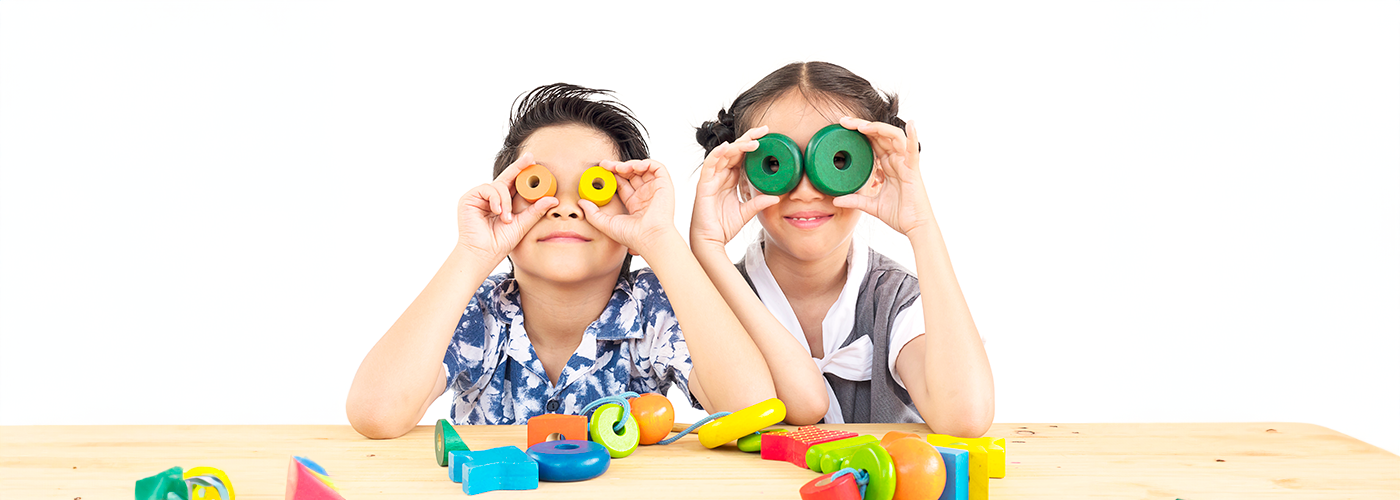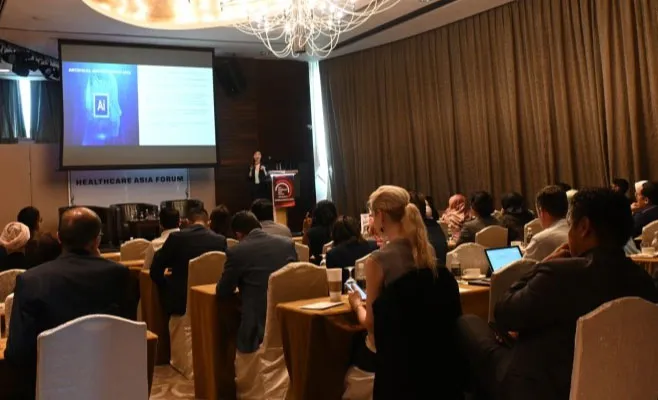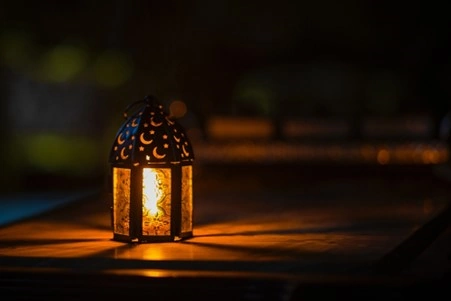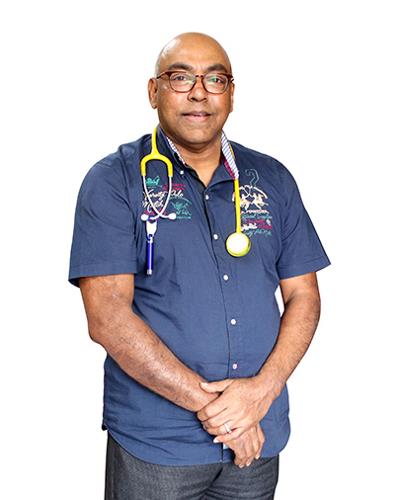Prepared by Team of Consultant Paediatrics & Paediatric ENT Surgeon
Gleneagles Kuala Lumpur
Medical visits to ENT specialists are quite common for parents of young children. Children are more prone to ear, nose, and throat ailments, mostly due to their undeveloped immune systems.
Common colds, flu, allergies, ear infection, allergic rhinitis and tonsillitis are the common ENT infections in children.
Let us learn about some common ENT infections, their symptoms and treatment options for children.
Ear infection
Most kids have at least one middle ear infection before they are 2 years old.
Symptoms of ear infections in children
Symptoms of an ear infection in the ear may include:
- Ear pain
- Fever
- Fluid in the middle ear
- Runny nose
- Loss of appetite
- Irritability
- Poor sleep
- Trouble hearing clearly
Treatment options for ear infections in children
It's best to get your child to the doctor to test if it is a viral or bacterial infection.
Treatment options depend on the age of the child, the severity and nature of the infection, and the presence of fluid in the middle ear.
Pus indicates a bacterial infection, and it would be best to be treated with antibiotics. A viral infection, conversely, can be treated with paracetamol. Additionally, the doctor may prescribe some pain-relieving medicines to keep the child comfortable.
If the frequency of an ear infection is 4 to 6 times a year, minimally invasive procedures are available to treat the problem.
Common colds and flu
Children catch colds and flu frequently due to their weak immune systems. While babies and toddlers can have as many as 8 to 10 colds a year, pre-schoolers and kindergartners may have about 9-12 colds in a year too.
Symptoms of common colds and flu in children
The symptoms of a common cold, flu, sinus infection or even COVID-19 are fairly similar in kids. It is therefore advisable to consult your doctor for diagnosis and treatment.
In most cases, the child will not be required to be taken to the doctor immediately as colds and flu can be managed at home with paracetamol and adequate rest.
If the child has mild symptoms like sneezes, mild cough, low-grade fever, runny nose, sore throat but no fever, and the symptoms diminish within a week, you may not require visiting a doctor.
However, consult your doctor/ENT specialist if:
- The child has a fever higher than 38 degrees Celsius that lasts for more than 72 hours
- The symptoms last more than a week
- Has flu-like symptoms which include fatigue, body aches, chills
- Feels less active and drowsy all the time
- Shows a considerable decline in appetite
- Looks dehydrated
- Cough that does not go away in 7-10 days
- Excessively watery/ red eyes
- Has yellow or greenish discharge from the nose which may be indicative of sinus infection
Treatment options for common colds and flu in children
Your doctor, upon diagnosis, may prescribe fever and pain relief medications, cold relief medications, and in some cases, antibiotics.
It may also be required to provide home relief options to the child-like nasal irrigation and clearing with saline solutions, steam, and the use of probiotics for better digestion.
Additionally, it is advisable to get an annual flu vaccination for your children to prevent more serious forms of flu.
Allergic Rhinitis
30% to 40% of the population has nasal allergies. Nasal related allergies or commonly known as allergic rhinitis can bring on sneezing, watery eyes, itchiness of the eyes, nose and sometimes a sore throat. Dust mites, pollen, pet dander or indoor mould
can be the cause of your child's allergies.
A cold tends to go away in a week or so, but nasal allergies can persist for most of the year. Early identification of childhood allergies will improve your child's quality of life, reduce the number of missed school days, and help you avoid having to
use sick time or vacation days to care for your child.
Symptoms of allergic rhinitis in children
Common symptoms include:
- Sneezing
- Stuffy or runny nose
- Itchy throat, eyes, and ears
- Nosebleeds
- Clear drainage from the nose
- Ear infections that keep coming back
- Breathing through the mouth
- Irritability
Treatment options for allergic rhinitis in children
The treatment options chosen for a child may depend on the age of the child, his overall health, the degree of sickness, and the ability of the child to take medications.
Treatment options include:
- Antihistamines
- Nose sprays
- Decongestants
- Medicines for asthma symptoms
- Allergy medications and injections
Tonsillitis
It seems like children always get a sore throat once or twice a year. What should you do when this happens? Could it be tonsillitis? How can you tell?
Usually, most people attribute pain in the throat to a tonsil infection, which is far from the truth. Most cases of sore throats are due to viral infections, which affect the throat, nose, middle ears, and lower airways to some degree.
The most common cause of sore throat in children is any one of a large number of viruses, none of which are treatable with antibiotics. These viruses can cause high fever and a very painful sore throat.
The tonsils are oval-shaped, pink masses of tissue on both sides of the throat. The adenoid is similar to the tonsils and is located in the very upper part of the throat, above the uvula and behind the nose. Both the tonsils and the adenoid are part of
your body's defence against infections.
Symptoms of tonsilitis in children
All cases of tonsillitis have sore throat, but not all cases of sore throat are due to tonsillitis.
Other symptoms like voice hoarseness and cough are also often blamed on the tonsils, either because the tonsils are enlarged, or they look "inflamed".
Many people seem to see enlarged and inflamed tonsils even when the tonsils are normal in size and colour.
Tonsillitis is an inflammation of the tonsils usually due to infection. There are several signs of tonsillitis, including:
- Red and swollen tonsils
- White or yellow coating over the tonsils
- A "throaty" voice
- Sore throat
- Uncomfortable or painful swallowing
- Swollen lymph nodes ("glands") in the neck
Treatment options for tonsilitis in children
Your child's doctor will first use certain tests to diagnose tonsilitis. This could include options like physical examination, looking inside the throat with a lighted instrument, checking for enlargement of spleen, throat swabs, and complete blood cell
count (CBC).
If your child shows any of these signs or symptoms of enlargement of the tonsils or the adenoid and does not seem to be getting better over a period of weeks, talk to your paediatrician for an accurate diagnosis.
Treatment options include at-home care and rest, saltwater gargles, pain and fever treatment medications, antibiotics, and in some cases, surgery.
Nose bleeds
Nosebleeds are common in children and can be caused by everyday factors like dry air, scratching nose, etc. Most nosebleeds stop immediately at home and do not require an ENT visit. However, if the nosebleed does not stop or is a result of a serious injury,
it is recommended to visit the doctor immediately.
Hearing loss
Hearing loss in children is very common and may be congenital, or due to various other medical and environmental conditions resulting in the sensorineural or conductive loss.
Symptoms of hearing loss in children
Signs in small babies may include the inability to respond to loud noises, lack of startle reflex, not speaking words at the age of 1 year.
In older children, symptoms include speech delay, unclear speech, not following directions, needing high television volume, missing parts of lessons in school.
Treatment options for hearing loss in children
Different interventions may be required for children depending on their symptoms. The treatment plan may include regular monitoring, using hearing aids, cochlear implants, medications, and surgeries.
Obstructive sleep apnoea (OSA)
Paediatric obstructive sleep apnoea happens when the child's breathing is blocked intermittently while sleeping. The cause is attributed to the narrowing of the upper airways of the child.
Symptoms of OSA in children
Common symptoms include:
- Strong snoring
- Pausing while breathing
- Restless sleep
- Coughing, choking often
- Night sweating
- Bedwetting
- Sleep terrors
Treatment options for OSA in children
Treatments for childhood sleep apnoea depend on the cause and severity of symptoms. Childhood sleep apnoea caused by enlarged tonsils and adenoids may be cured by surgical remove of the tonsils and adenoids.
Steroid nasal spray, saline nasal rinses, or allergy medications may be prescribed for children with mild sleep apnoea symptoms. They may also be monitored over time without administering treatment.
Make an appointment at Gleneagles Hospital
If your child shows any signs or symptoms of any of the above conditions and they do not seem to be getting better over a period of weeks, contact us to make an appointment with a Consultant Paediatric ENT Surgeon for an accurate diagnosis.
















